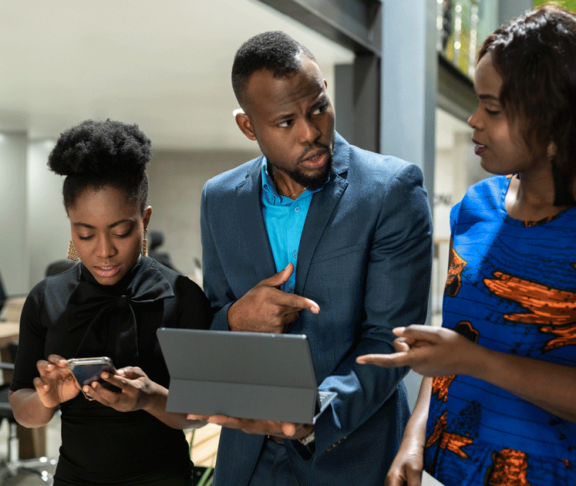
Thomas Östros
Vice President, European Investment Bank
Digital infrastructure, including broadband, mobile telecom and internet, is at the heart of the digital economy. However, an estimated 900 million people are still not connected to the internet across Africa.
Even for those who are connected, connectivity prices remain mostly high, and bandwidth is severely limited in many areas. Only 0.4% of Africa’s population has a fixed broadband subscription, and a great majority of internet users rely on mobile broadband. To accelerate Africa’s economic recovery beyond the pandemic, the continent will need to speed up its digital transformation.
Benefitting sectors
The Global Gateway, the EU plan to support infrastructure development around the world, aims to mobilise €300 billion between 2021 and 2027 for connectivity projects, including in the digital sector. Investing in Africa’s digital infrastructure will help the continent build a secure, inclusive and safe economy.
Getting everyone online is a great challenge for market players. Return on investment declines with decreasing population density or geographical constraints. Multilateral public banks can help governments improve voice and data connectivity in rural areas. The European Investment Bank, the EU bank, is helping find solutions to connect underserved areas. We blend our loans with financing from the European Commission to ‘de-risk’ investments, thus attracting private sector investors.
Only 0.4% of Africa’s population has a fixed broadband subscription, and a great majority of internet users rely on mobile broadband.
Infrastructure sharing
One alternative approach aimed at increasing connectivity in rural areas is infrastructure sharing, which reduces costs and makes it easier to expand the reach of networks. The sharing arrangement can concern passive and/or active equipment.
Passive infrastructure sharing involves, for example, the sharing of towers, fibre cables and access to buildings. Active infrastructure sharing involves, for instance, the sharing of a radio network, national roaming and the introduction of mobile virtual network operators.
Global connections
Around 99% of global international data traffic runs through undersea cables. The major submarine cable routes connect North America with Europe and Asia. Although the African continent remains underserved, operators and investors have recently led some projects, especially on its eastern coast.
Our €25 million loan for a submarine cable will reinforce Mauritania’s digital connection with the rest of the world. The 600-km cable will support economic resilience in the country by reducing the risks arising from loss of connection through existing systems and providing digital access for more people.
Digital technologies unlock new pathways for rapid economic growth, innovation, job creation and access to services that would have been unimaginable in Africa only a decade ago.

